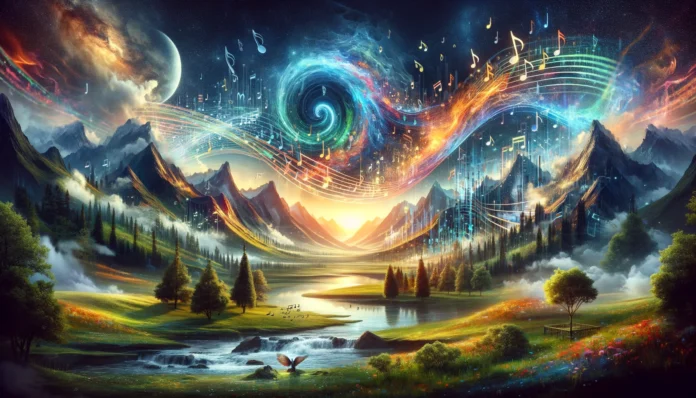In the vast landscape of technological innovation, few advancements evoke the sense of wonder and creativity quite like the fusion of artificial intelligence (AI) and the world of art and music. Imagine a scenario where lines of code transform into beautiful melodies, where algorithms compose symphonies that stir the soul, and where machines create art that captivates the imagination. This is the realm of AI-generated art and music—a realm where creativity knows no bounds, and where the boundaries between human and machine blur in the pursuit of artistic expression.
At the heart of this phenomenon lies the concept of generative AI, a branch of artificial intelligence that focuses on creating new content—whether it be images, music, or text—based on patterns and data it has been trained on. By analyzing vast datasets of existing artworks or musical compositions, AI algorithms can learn the underlying structures and characteristics that define a particular style or genre. Armed with this knowledge, they can then generate new, original pieces that exhibit the same aesthetic qualities, albeit with a unique twist that reflects the algorithm’s own interpretation.
One of the most intriguing aspects of AI-generated art and music is the element of surprise. Traditional artistic endeavors often rely on the conscious choices and intentions of the human creator. In contrast, AI operates in a realm of uncertainty, where randomness and probability play crucial roles in shaping the final output. This unpredictability can lead to unexpected juxtapositions of sounds or images, pushing the boundaries of creativity and challenging our preconceived notions of what constitutes art or music.
Take, for example, the work of AI artist Mario Klingemann, whose creations blur the lines between the organic and the synthetic. Using deep learning algorithms, Klingemann generates mesmerizing visual artworks that evoke a sense of otherworldly beauty. From intricate patterns reminiscent of natural phenomena to surreal portraits that defy conventional notions of identity, his pieces invite viewers to explore the intersection of technology and creativity.
Similarly, in the realm of music, AI has demonstrated its ability to compose melodies that rival those crafted by human composers. Projects like OpenAI’s MuseNet showcase the potential of AI to generate music in a wide range of styles, from classical symphonies to jazz improvisations. By analyzing vast libraries of musical scores and compositions, MuseNet can generate new pieces that capture the essence of different genres while adding its own unique flair.
But AI-generated art and music are not merely novelties or curiosities—they have the potential to fundamentally reshape the way we create and experience culture. By democratizing the creative process and transcending traditional notions of authorship, AI empowers artists and musicians to explore new avenues of expression and reach new audiences. Moreover, AI can serve as a collaborator and co-creator, augmenting human creativity rather than replacing it.
However, as with any technological advancement, AI-generated art and music also raise important questions and challenges. Concerns about algorithmic bias, ethical implications, and the loss of human creativity loom large in discussions surrounding this topic. Critics argue that AI can never truly replicate the depth of human emotion or the nuances of human experience, and that the pursuit of algorithmic perfection risks devaluing the human element in art and music.
Nevertheless, the allure of AI-generated art and music persists, fueled by the promise of endless possibility and the thrill of discovery. As we continue to push the boundaries of what machines can achieve, we must also embrace the opportunities for collaboration and exploration that AI affords us. Whether it’s a haunting melody that resonates in the depths of our soul or a mesmerizing artwork that sparks our imagination, the magic of AI-generated art and music lies in its ability to transcend the limitations of the human mind and inspire us to dream, create, and innovate.
In conclusion, the convergence of AI and art is a testament to the boundless potential of human creativity and technological innovation. By harnessing the power of algorithms and machine learning, we can unlock new realms of artistic expression and redefine the way we perceive and interact with the world around us. As we embark on this journey of discovery, let us embrace the magic of AI-generated art and music and celebrate the endless possibilities that lie ahead.





